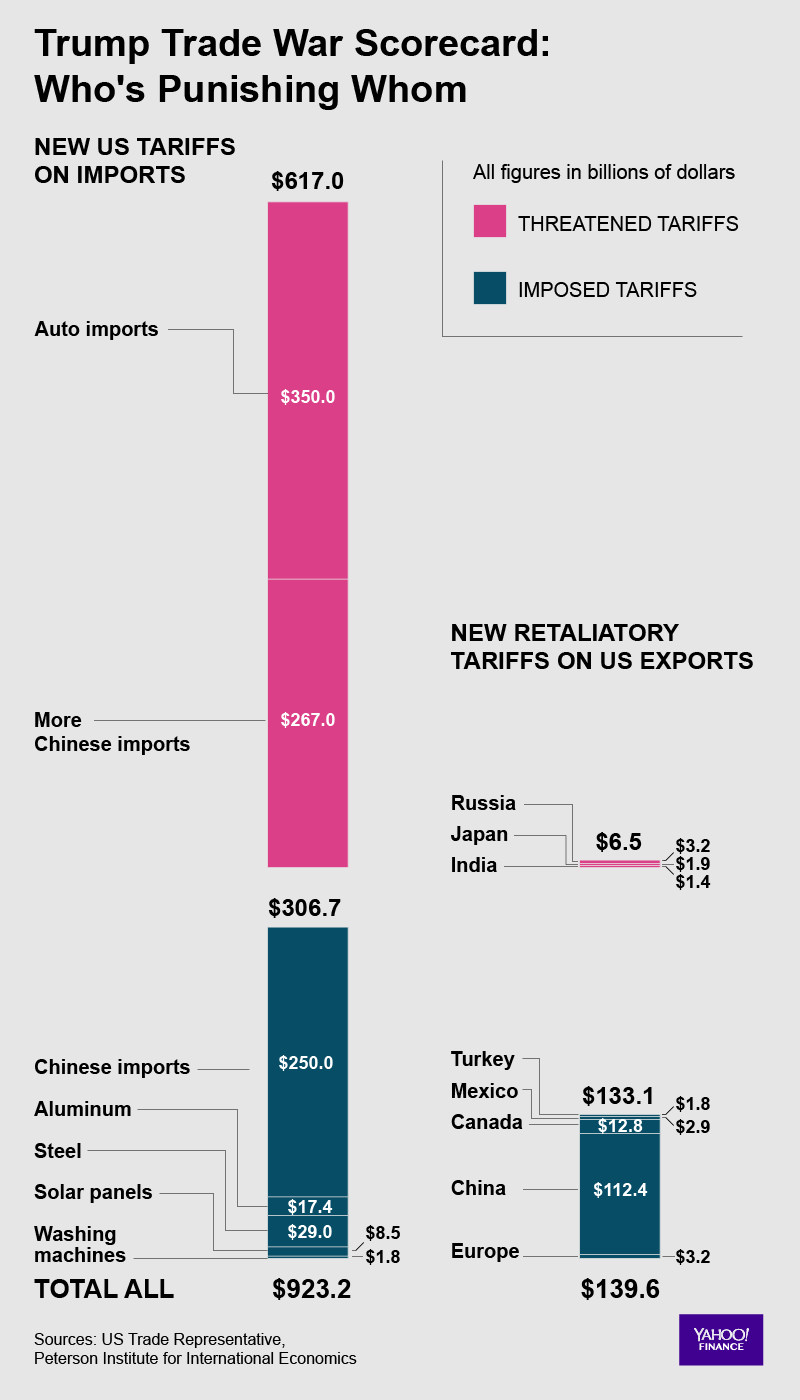The trade war is an Election Day risk for Trump
The U.S. economy will be in solid shape on Election Day. But fissures may be forming by then, due to President Trump’s own trade policies.
Trump has been rolling out tariffs on imports in dribs and drabs this year, with financial markets gradually getting comfortable with Trump’s protectionist trade agenda. But markets may not have fully digested Trump’s latest move, which was a considerable escalation. On Sept. 24, tariffs went into effect on $200 billion worth of Chinese imports, bringing the total value of imports subject to new tariffs to about $307 billion in 2018.
The September move, in other words, tripled the amount of imports subject to new tariffs. As a portion of overall economic activity, those imports are still relatively small. But the new tariffs will have an impact on the real economy, and the effects will start to materialize by late October or early November. Election Day is Tuesday, Nov. 6.
“The tariffs implemented on Sept. 24 will be visible at the earliest by the end of this month,” says Greg Daco, chief U.S. economist for Oxford Economics. “While it’s true that private-sector confidence has so far remained buoyant, I wouldn’t be surprised to see some weakening in the upcoming surveys.”

Tariffs are a tax that raise the cost of imports. Producers, wholesalers and retailers may bear some of the added cost, but some if it is bound to show up as higher prices paid by consumers. Inflation right now is a relatively low 2.7%, which means modest price hikes won’t derail the economy.
“We expect higher post-tariff import prices to pass through to domestic prices and weigh on real income and wealth, reducing domestic demand,” forecasting firm IHS Markit wrote in a recent research note to clients. “The net effect will be somewhat slower U.S. GDP growth and somewhat greater domestic inflation.”
IHS estimates GDP growth will be 2.7% in the current quarter, and 2.9%. for the entire year. That’s a slowdown from the 4.2% growth rate in the second quarter, but it’s still good enough to keep hiring strong and the unemployment rate below 4%. There’s one more monthly jobs report before Election Day, and there’s no reason to think it will depart from the trend of about 195,000 new jobs per month during the last year.
Trump’s trade war is making some companies jittery, though, and that could cause a stock-market pullback or other small tremors that get voters’ attention. Industrial firm PPG, for instance, said on Oct. 8 it expects poor third-quarter results due to higher input costs caused by tariffs and other factors, along with softening demand in China and Europe, which are retaliating against Trump’s tariffs with their own protectionist measures. PPG’s stock fell 9% in one day. If that’s a harbinger of other earnings reports coming in October, watch for a market pullback.
Nothing will tank the economy by Election Day, but any event that influences a fraction of voters could be significant in an election with dozens of toss-up races that will determine whether Trump’s Republicans or the opposition Democrats control Congress next year. Trump’s tariffs are already unpopular, with 61% disapproving of his trade policy in a recent CNBC poll. The Trump tax cuts are unpopular as well, because voters think they disproportionately favor the wealthy. The economy should be a net positive for Trump, but voters are fussy, even when times are pretty good.
Confidential tip line: [email protected]. Click here to get Rick’s stories by email.
Read more:
Rick Newman is the author of four books, including “Rebounders: How Winners Pivot from Setback to Success.” Follow him on Twitter: @rickjnewman
